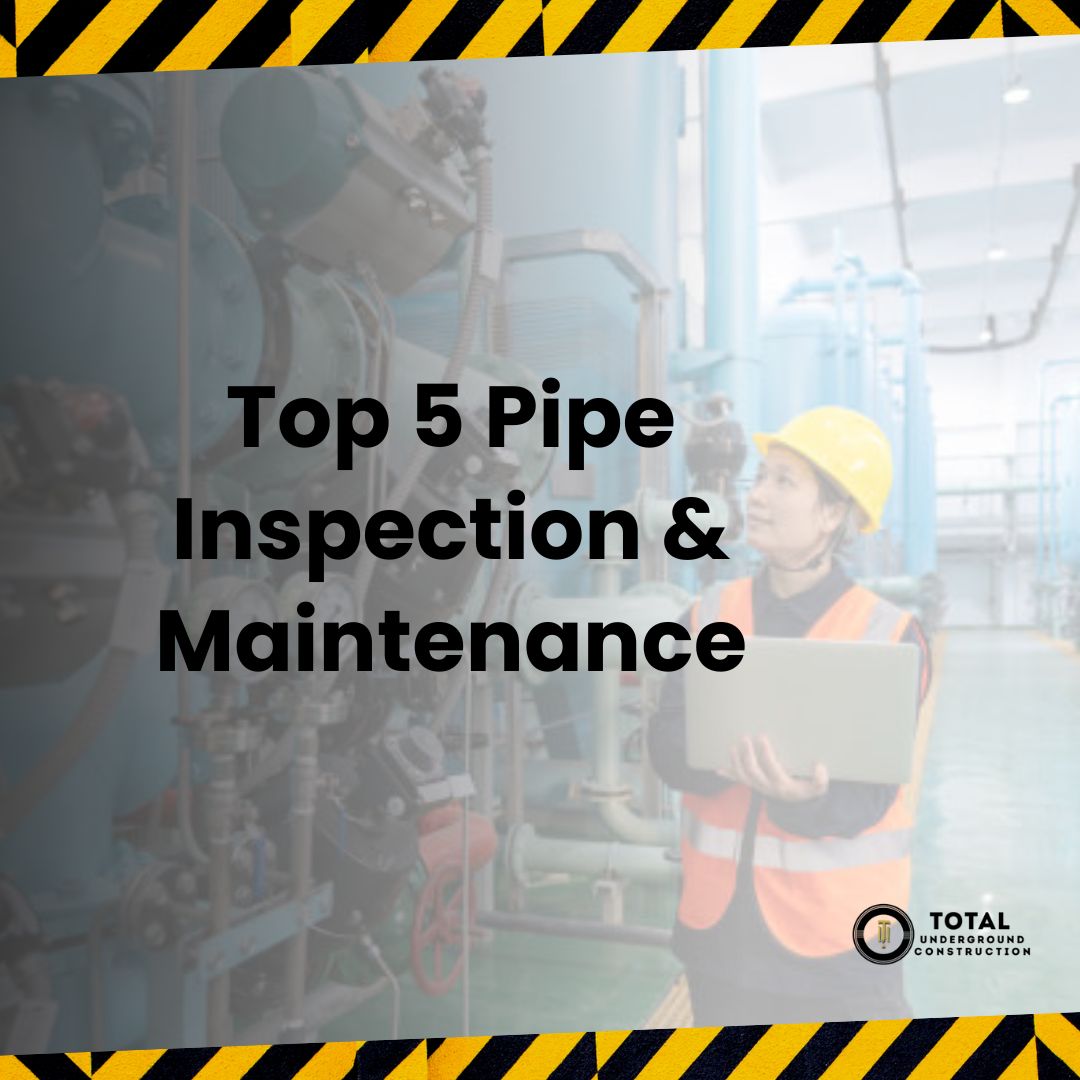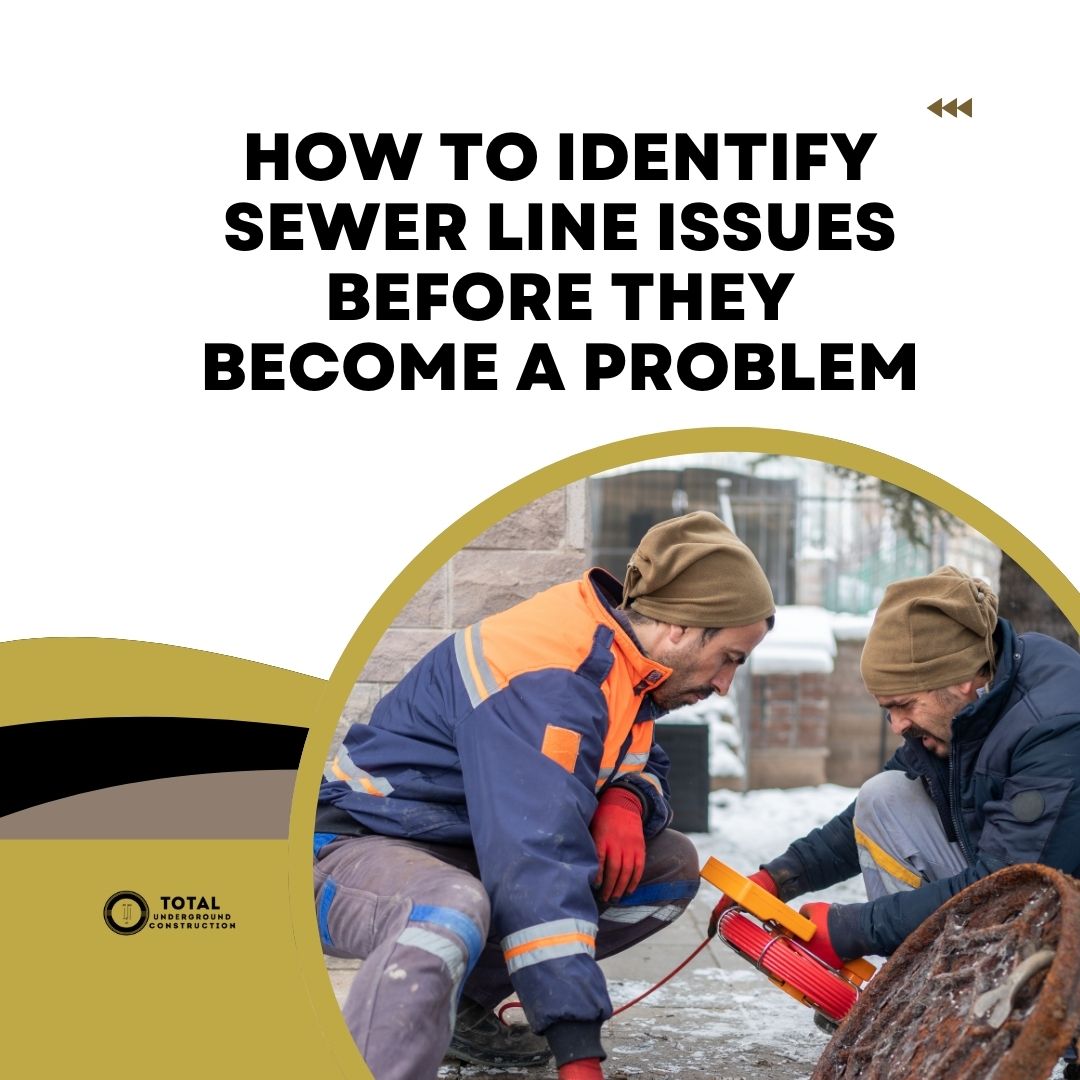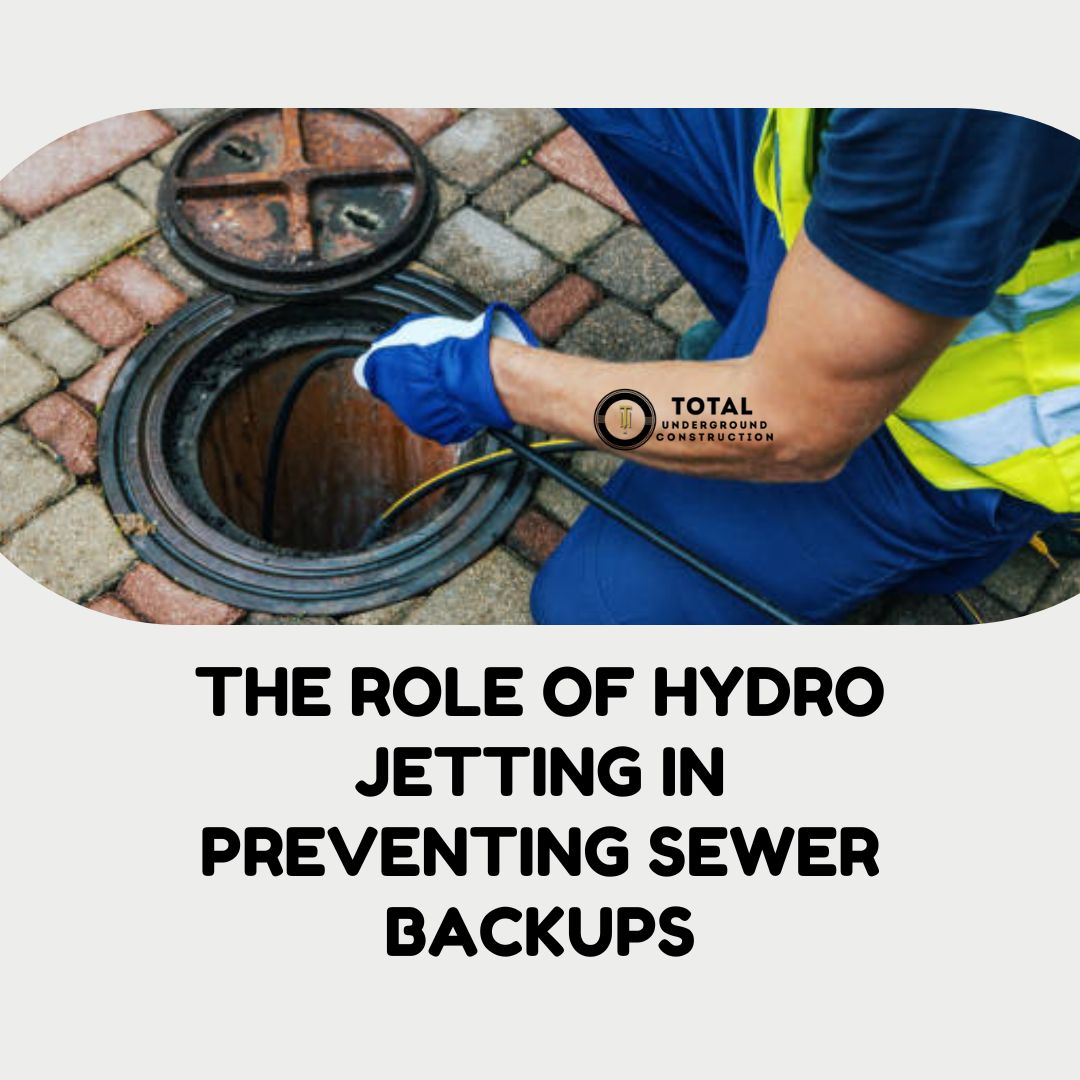When water enters your property, it should flow in one direction – toward your property. Once water is inside your water system, it should maintain the same direction inside the pipes.
However, this is not always the case. Water can flow back at various points inside your property’s system or between the main and internal plumbing systems. The change in direction can contaminate potable water with human waste, soaps from sinks, dishwashers, and showers, chlorine from swimming pools, or fertilizers and pesticides from outside pipes.
In this blog post, you will learn:
- Definition of a Backflow
- What Causes Backflows
- Potential Backflow Sites In Your Home
- The Dangers of Backflow
- The Backflow Prevention System
Definition of a Backflow
Backflow in plumbing is the movement of water against its intended flow. These incidents are common, but many go unnoticed. Localized cases of bacteria contamination, sewage leakages into the main water line, or chemical seepage get caught because of the resulting health effects.
In most cases, the situation is not wide enough to warrant further investigations. So, it is your responsibility as a property owner to ensure your plumbing system is free from backflow. Work with certified plumbers to maintain, repair, replace, or install your plumbing system.
What Causes BackFlow?
According to the American Backflow Prevention Association, the conditions necessary for backflow include:
- Direct and indirect cross-connections
- Back pressure and back siphonage
- Possibility of contamination
When downstream pressure inside non-potable water lines exceeds the pressure inside the main water line, water changes direction due to the resulting siphoning effect at the cross-connections. The same transpires at interconnection points within your plumbing system.
The main culprits behind the pressure variation include:
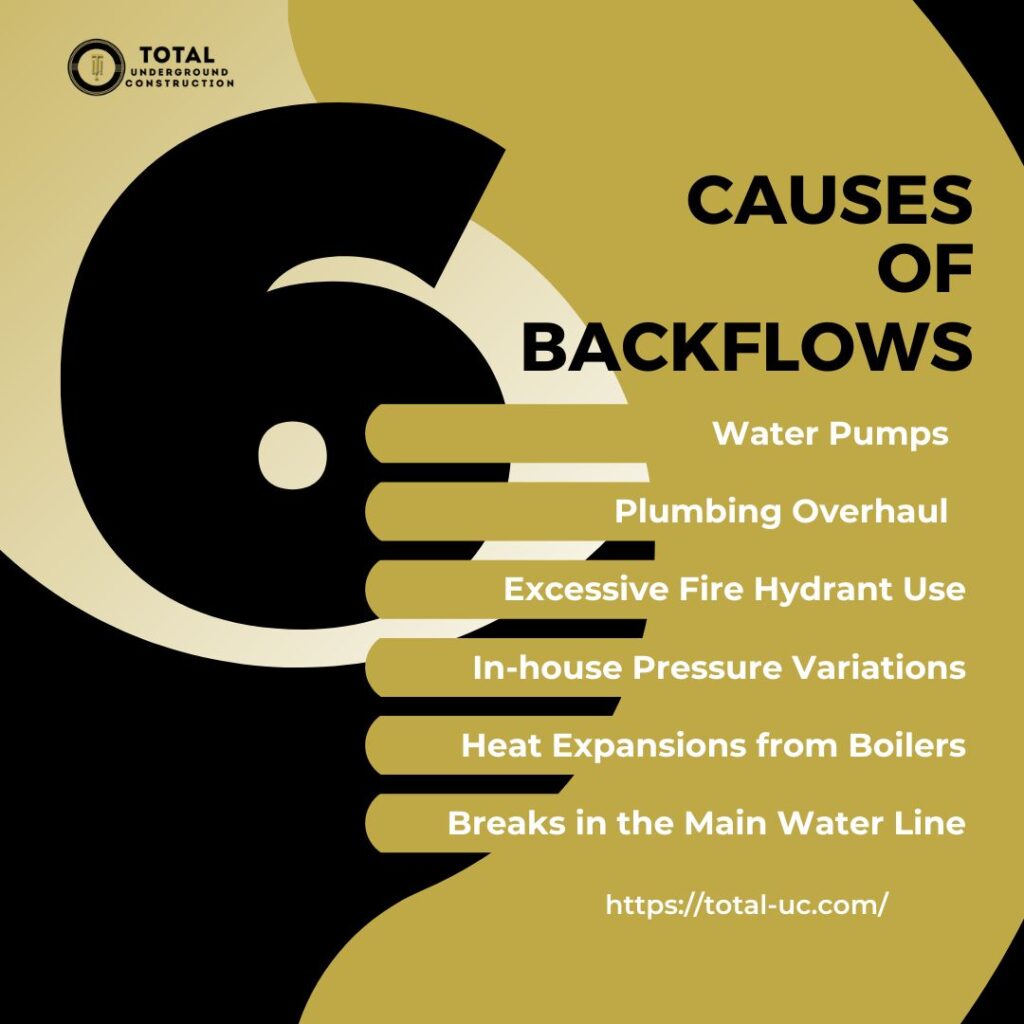
1. Excessive Fire Hydrant Use
High water usage activities like firefighting can disrupt pressure between your plumbing system and the main water supply. The risk of backflow is high in neighborhoods experiencing frequent fires, necessitating the use of fire hydrants to quench the inferno.
2. Water Pumps
Pressure fluctuations can also occur if a pump, like a borehole pump, is linked to your internal water plumbing system and pumps at a higher pressure than the pressure inside the main water line.
3. Breaks in the Main Water Line
A broken main water pipe in your municipality can lower pressure inside the line, creating a siphoning effect in your property’s plumbing system. This sips contaminated water into the main water line.
4. Plumbing Overhaul
Sometimes, plumbing inspections, repairs, or replacements require draining the entire property’s plumbing system. The action can create temporary pressure variations between your internal system and the main water line, inducing backflow.
5. Heat Expansions from Boilers
Water expands as it heats. In a closed boiler system, there is no place volume to accommodate the expansion, inducing pressure fluctuation throughout the system. Frequent and rapid pressure variations can cause backflow in the main water line.
6. In-House Pressure Variations
Gadgets in your house rendering more water pressure than the pressure inside your plumbing lines can generate significant pressure variations, resulting in backflow.
Potential Backflow Sites In Your Home
Bathroom or Washroom
Restrooms have plenty of line cross connections because of the number of faucets available, making them susceptible to backflows. Threaded faucets are particularly vulnerable to this problem.
Kitchen
Washing machines and garbage disposals in the kitchen also have cross-connections vulnerable to backflows when pressure fluctuates.
The Dangers of Backflow
Backflows are hazardous. They infiltrate potable water with biological and chemical contaminants, leaving your property or whole neighborhoods at risk of contracting water-borne diseases or chemical poisoning. Without a backflow-prevention system, a garden hose can siphon accumulating pesticides into your water lines.
A toilet without a backflow-preventing system slowly introduces contaminants and odors into your portable water system with every flush. The swimming pool in your backyard getting its water supply from your main water system can slowly introduce chlorine into your main water pipe.
Hiring professional plumbers to install, repair, or replace your plumbing system to reduce backflow instances is vital. Certified plumbers use their expertise to choose pipes and devices that work together to minimize the impact of pressure variation on water flow, preventing cross-contamination in pipe cross-connections.
The Backflow Prevention System
The best way to keep your property from backflow contamination is through a backflow prevention system. It creates vital interfaces between cross-connections in the plumbing lines, containing water in the designated pipes despite pressure fluctuations and back siphonage. The system consists of various devices and techniques that keep the internal pressure constant, maintain a unidirectional water flow, and prevent back siphoning.
Professional plumbers determine the devices and preventative procedures suitable for your plumbing system depending on the local plumbing codes, prevention purpose, and contamination type. They conduct thorough assessments to develop an effective prevention system for every plumbing system.
Here are examples of devices and techniques to prevent backflow and back siphonage:
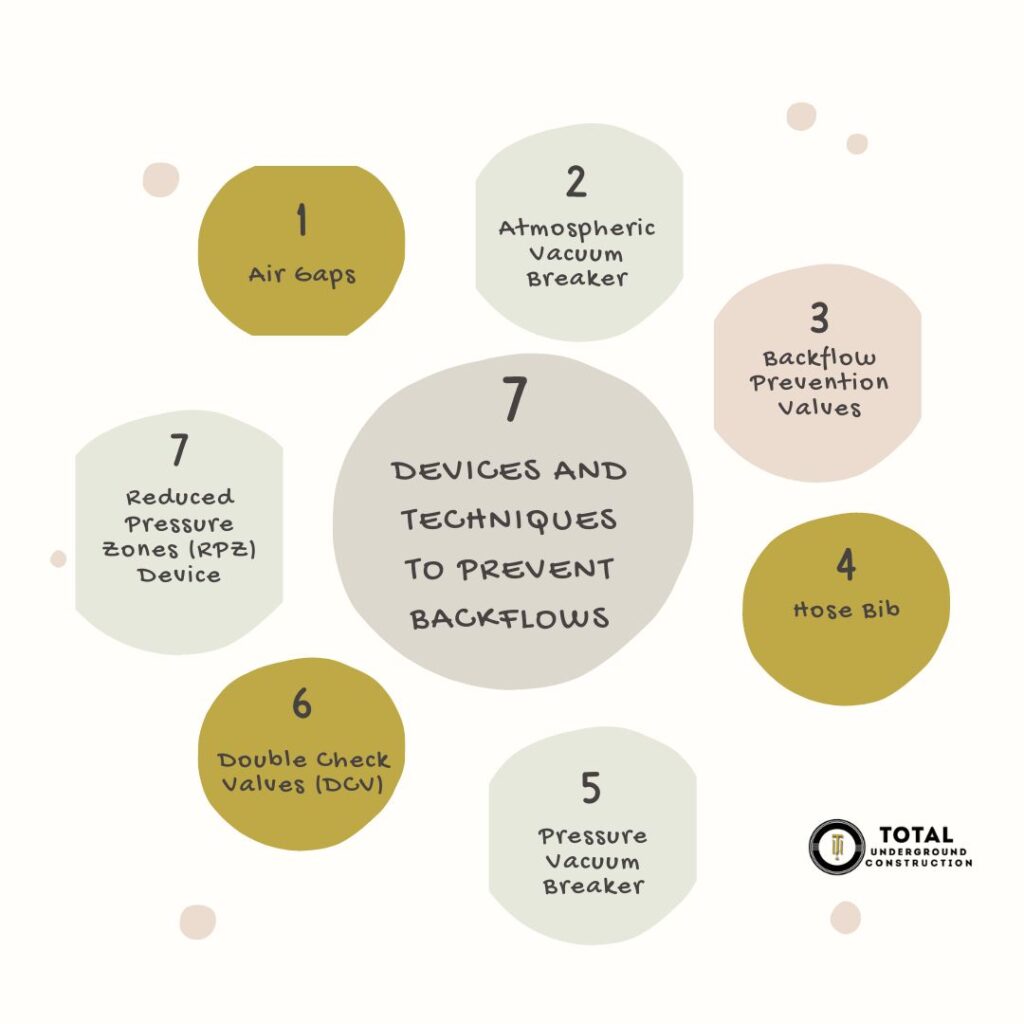
1. Air Gaps
Plumbers employ the air gap technique in high-risk contamination areas in the plumbing system. The air gap is a vertical space between a fixture’s water outlet and the receiving vessel’s flood rim, like a sink basin. It creates an air barrier that contaminated water from the drain cannot physically overcome unless it defies gravity.
2. Atmospheric Vacuum Breaker
The atmospheric vacuum breaker prevents back siphonage. It has an air inlet valve, a check seat, and air inlet ports. Water streaming into the device’s body triggers the air inlet valve to seal the air inlet ports.
When the flow stops, the air inlet valve drops, forming a check valve that prevents back siphonage. At the same time, it opens the air inlet ports, permitting air to enter and balance the vacuum.
The vacuum breaker works well in toilets, sink faucets, and urinals. However, it does not prevent backpressure. So, it may not prevent backflows caused by pressure variations.
3. Backflow Prevention Valves
Valves are installed in clean water sections most vulnerable to contamination, like the kitchen and bathroom areas with the most pipe cross-connection. However, valves require regular inspection because they have movable parts.
4. Hose Bib
A traditional device used to prevent backflow is the horse bib. Plumbers fit every faucet and outlet with the hose bib to maintain a unidirectional water flow, even in fluctuating pressure situations.
5. Pressure Vacuum Breaker
If you have an underground sprinkling system linked to your potable water system, the pressure vacuum breaker can help prevent pressure variation and, in essence, backflow. The device has a check valve that keeps water from flowing in the opposite direction when pressure drops.
6. Double Check Valves (DCV)
Where the contamination is non-health related, double-check valves are ideal. The DCV structure maintains unidirectional flow. It has two spring-loaded check valves, which shut the valves when water is absent or the flow direction changes.
The two valves enhance the efficacy of the device in that when one breaks or malfunctions, the other valve maintains the backflow prevention mechanism. DCVs prevent backflow on fire hydrant cross-connections.
7. Reduced Pressure Zones (RPZ) Device
The reduced pressure zone device is an advanced version of the DCV. It contains a hydraulically operated relief valve in addition to the double spring-loaded check valves for enhanced efficiency in preventing backflow.
It is the standard required prevention gadget where fire hydrants connect with the main water supply in areas where contamination will result in disease outbreaks and even death.
Work With Professional Plumbers
Backflows are dangerous outcomes of inefficient plumbing systems. They can poison entire plumbing systems, rendering potable water useless. Plumbing codes oversee backflow-prevention systems to avert disease outbreaks and water poisoning in residential and commercial areas.
Working with professional plumbers reduces backflow risks as their training, expertise, and experience enable them to follow protocol when installing, repairing, or replacing your plumbing lines. At Total UC, we ensure your plumbing system maintains unidirectional water flow all the time.
We perform thorough assessments using industry-grade equipment and techniques to ensure your plumbing system is not contaminating your potable water line. We also provide maintenance services, encompassing testing and physical line inspections with minimal intrusion to ascertain the safety of your water system. Call us today for reliable and professional backflow preventive measures.

